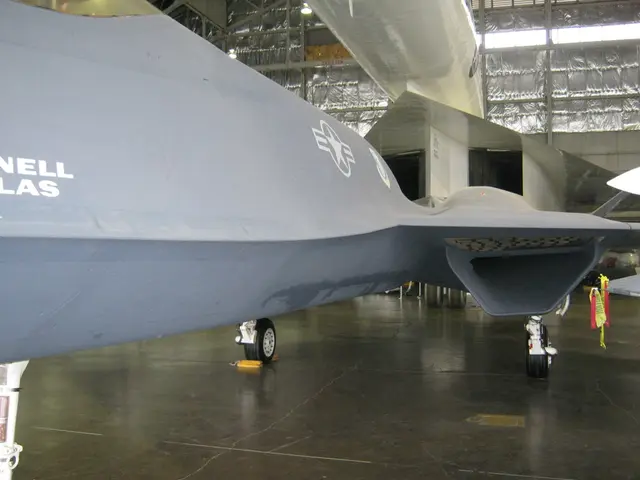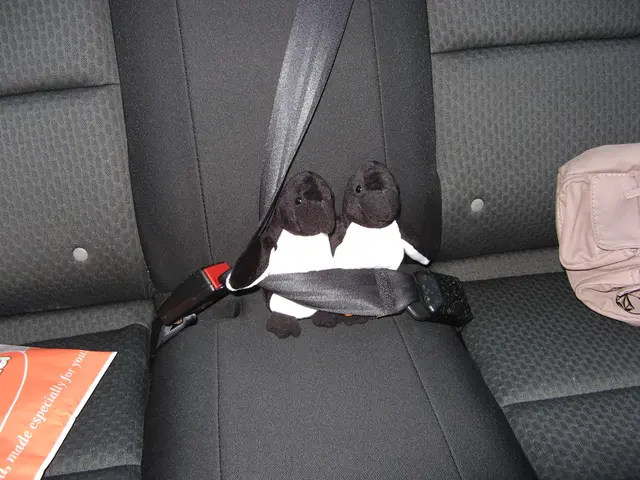A Massive Theft Unveiled: Hundreds of Thousands of Euros Worth of Aircraft Rivets Pilfered
- 🚨 🛫
Aircraft Rivets Worth Fortune Stolen in Massive Heist - Aircraft debris valued at several tons has been stolen.
In a shocking turn of events, a colossal theft of aircraft rivets, valued at hundreds of thousands of euros, has been exposed. The 49-year-old perpetrator, hailing from Geestequelle in the district of Rotenburg, was found to have amassed over 100 gray plastic boxes brimming with these vital airplane components, as authorities reported. The local volunteer fire department was summoned to assist in transporting the colossal four to five tons of ill-gotten goods.
The disappearance of these essential aircraft rivets had begun to create ripples in the operations of a Hamburg-based aviation manufacturer over the preceding months. Internal inquiries eventually led to the 49-year-old suspect. "The illicit employee was found repeatedly stuffing the rivets into his backpack," a spokesperson for the authorities explained.
Upon execution of a search warrant at the suspect's residence, the authorities were led by the culprit himself to the cache of pilfered aircraft rivets stored in his shed. The authorities unearthed numerous boxes of the stolen goods, each weighing between 41 and 63 kilos. The 49-year-old, it seems, harbored ambitious plans to cash in on the valuable titanium-made parts. "Titanium is a rare and coveted metal," the authorities' spokesperson clarified.
- 👮♂️ 🚒
Stealthy Theft and Its Potential Implications for the Aviation Industry:
While grand-scale thefts of aircraft parts may not be a routine occurrence, they can yield substantial consequences for the aviation sector. The case of an Airbus employee making off with close to one million euros worth of titanium rivets underscores the possibility of large-scale pilferage within prominent manufacturers[1]. Such incidents can potentially disrupt production, push up costs with replacement and reinforced security measures, and potentially compromise safety if the stolen components are resold and used in aircraft maintenance without thorough inspection.
Ripple Effects on the Market:
- Production Disruptions: The theft of crucial components can lead to production halts as manufacturers hunt for replacements, driving up operational costs and affecting delivery deadlines.
- Safety Risks: The resale of illicit aircraft parts, including rivets, without proper certification poses a serious safety concern if they are utilised in maintenance or repairs without inspection for quality and integrity.
- Enhanced Security Measures: Escalated incidents of theft may necessitate enhanced security across facilities, adding to operational expenditures but serving as a deterrent to future dastardly deeds.
- Market Perceptions: Repeated instances of theft can erode trust in the industry's ability to secure its supply chain, potentially impacting investor confidence, and generating concern over safety standards.
Although the frequency of such thefts isn't often publicised, each incident can send ripples throughout the industry, highlighting the necessity for stringent security protocols and inventory management.
- The community must implement stricter policy to address the growing issue of theft in the aerospace industry, particularly focused on valuable components such as titanium aircraft rivets.
- The perpetrator's ill-gotten goods, weighing between 41 and 63 kilos, suggest an organized effort requiring vocational training for the mass production and transportation of these parts.
- The aviation industry, already grappling with issues of product recalls and maintenance costs, might face further challenges if thefts escalate, necessitating additional vocational training for security personnel.
- With the stolen titanium aircraft rivets potentially worth hundreds of thousands of euros, it's essential to investigate finance records for insights into the distribution chain and the people within the industry involved.
- Police reports, general-news outlets, and crime-and-justice segments should extensively cover such cases, highlighting the importance of vocational training in crime scene investigation to properly weigh and contain evidence for future prosecutions.








